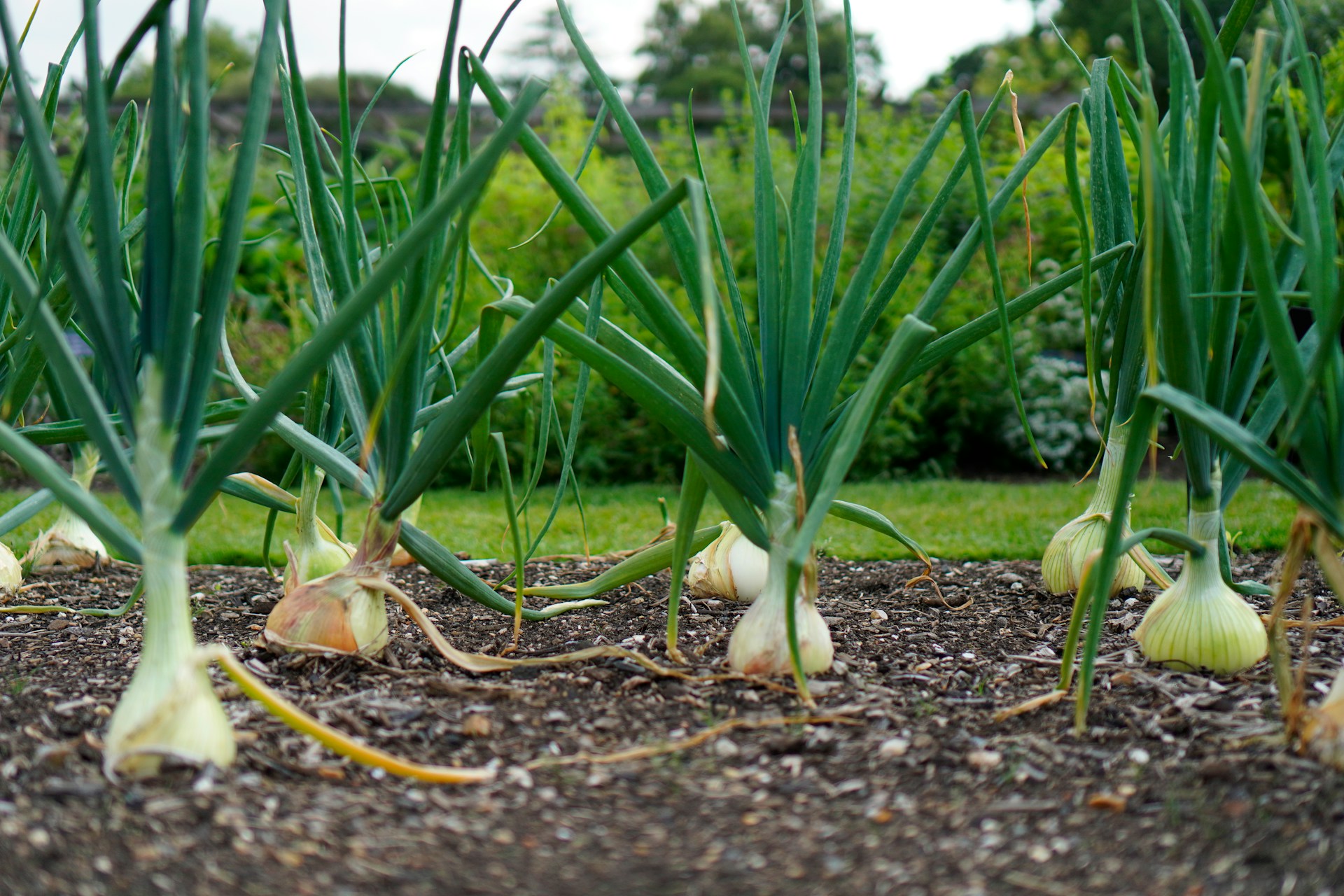Efficiency and proficiency are crucial aspects in the operational success of any industry, including the sector of produce distribution.
Through robust strategic planning and implementation, companies can streamline their logistical operations significantly.
Lean management, historically rooted in the manufacturing domain, offers powerful tools to achieve these enhancements.
It underscores unparalleled value in terms of reducing wastage and boosting productivity.
However, realising its full potential for your produce distribution business requires a nuanced understanding and apt application of strategies.
In this article, we take a detailed look at how you can make your operations leaner, thereby driving substantial improvements.
Contents
Lean Practices To Apply In Produce Distribution
1. Streamline Inventory Management System
The streamlining of the inventory management system can make a significant impact on the productivity and profitability of produce distribution businesses.
In the world of produce distribution, efficiency is key and having an organized, streamlined inventory management system is integral for operations.
Lean practices emphasize continuous improvement and eliminating waste, which can be particularly applied to inventory management.
A comprehensive, streamlined inventory management system can help reduce overstock, minimize waste, and streamline order fulfillment, resulting in improved operational efficiency and customer satisfaction.
The first step is todigitize and automate the inventory management process. This implies utilizing modern software and technologies that allow for real-time tracking and analysis of inventory.
Automation not only eliminates manual errors but also frees up time for personnel to focus on other critical areas of the business.
Next, employing a centralized inventory system can ensure a single, consistent record of inventory across all distribution channels. This makes it less complicated and more efficient to manage inventory, avoiding overstocks or shortages.
It’s also necessary to utilize data-driven decision making in inventory management. Detailed analysis of historical sales data and future sales predictions can inform inventory decisions, reducing the risk of waste from unsold produce.
Furthermore, suppliers need to work closely with their partners and customers to implement a Vendor Managed Inventory (VMI) approach. Here, vendors are responsible for maintaining the inventory levels of their products at their customers’ locations.
This approach can result in better inventory accuracy, reduced stockouts and overstocks, and improved relationships with customers.
Another effective strategy is the use of Just-in-Time (JIT) inventory management. In this practice, goods are only received as they are required, reducing the need for extended storage and minimizing wastage.
However, to successfully implement JIT, businesses must understand their own and their customers’ demands in real-time and work with trusted suppliers who can deliver promptly and reliably.
An effectively streamlined inventory management system can contribute significantly towards the success of any produce distribution business, ensuring that not only are resources used most efficiently, but customer demands are also met accurately and quickly.
In essence, by streamlining the inventory management system, produce distributors can establish a solid foundation for applying additional lean practices within their business operations.
Remember, the ultimate goal is to create a value-added system that promotes efficiency, eliminates waste, and continually strives for improvement.
2. Implement Just-in-Time delivery strategy
One crucial methodology businesses can utilize to streamline operations in the field of produce distribution is the Just-in-Time delivery strategy.
This advanced management approach originated from Japanese manufacturing and has recently seen wide application in various industries, including food distribution.
One of the paramount benefits of the Just-in-Time delivery system is that it minimizes the storage time of perishable items, significantly reducing the risk of product spoilage and waste.
Long storage times have always been a pain point in the produce distribution industry, immensely contributing to the high wastage rates.
However, the Just-in-Time delivery system addresses this issue head-on by strictly syncing production and delivery times.
This strategy ensures that produce items are transported to their point of sale almost immediately after harvest, thereby maintaining their freshness and reducing waste.
In addition to reducing wastage, the Just-in-Time delivery system also emphasizes efficiency in transportation and logistics, further saving on operational costs.
This is achieved by carefully scheduling the delivery routes and times to avoid unnecessary delays and setbacks, ensuring products get to market in the shortest time possible.
A key element of successful implementation of this system is accurate demand forecasting.
It is essential to accurately predict customer demand to avoid overproduction or underproduction scenarios, both of which can be detrimental to the business.
Coupling this with a robust supplier network helps to ensure constant and timely replenishment of inventory, thus effectuating the Just-in-Time delivery strategy.
Indeed, when implemented correctly, this delivery strategy can significantly boost the efficiency and profitability of produce distribution activities.
Importantly, the Just-in-Time delivery strategy contributes to the realization of lean principles in produce distribution.
The principle of eliminating waste, in particular, is fundamentally actualized via this system as it minimizes storages time and maximizes efficiency.
The resultant resource savings can then be passed on to customers in the form of reduced prices, thus fostering a competitive market advantage.
Moreover, the Just-in-Time delivery strategy also aligns well with the principle of continuous improvement, as its success depends on constant evaluation and optimization of operational activities.
Therefore, integrating the Just-in-Time delivery strategy into produce distribution operations can immensely contribute to the adoption and execution of lean practices, ultimately driving superior business performance and customer satisfaction.
3. Use Standardized Work Processes
For effective implementation of Lean practices in produce distribution, using standardized work processes is indispensable.
A successful Lean approach revolves around establishing clear, standardized procedures for all activities in the distribution process.
This involves creating visibly laid out workflows that every employee can easily understand and follow.
Standardization reduces the likelihood of errors, enhances productivity and ensures the product quality remains consistent.
The major benefit of using standardized work processes is repeatability, which is crucial in maintaining a steady and predictable supply flow.
Moreover, the standardization of tasks enables workers to become experts in their processes thus improving overall performance and productivity.
Furthermore, a standardized work process facilitates cross-training and process improvement.
By examining these standardized processes, businesses can easily identify inefficiencies and eliminate waste, further enhancing lean production.
It’s worth noting that standardization is not synonymous with rigidity.
Whilst these processes should be consistent, they must also remain flexible to accommodate scalability and continuous improvements.
The nature of the produce distribution industry necessitates this flexibility, as factors such as seasonal variations and market trends can impact a company’s operations.
However, when changes need to be implemented, they should be carefully managed and communicated to prevent disruption in the distribution process.
On the whole, using standardized work processes in produce distribution not only streamlines operations but also contributes to the successful implementation of other Lean practices.
Remember that standardization along with other lean principles, results in cost reduction, improved quality, and increased customer satisfaction.
Therefore, using standardized work processes is indeed a strategic decision that provides a competitive advantage.
Implementing and maintaining these processes require a culture of discipline and a robust management system.
4. Eliminate waste throughout distribution stages.
The application of lean practices in the produce distribution industry is paramount, and one crucial aspect is the elimination of waste throughout distribution stages.
Fruit and vegetable distribution involves multiple stages, and at each stage, there are opportunities for waste.
Waste can occur in handling, during storage, in transportation, and even in the packaging process, making it a complex issue to tackle.
In essence, waste in produce distribution translates to financial loss, a significant reduction in product quality, and a detrimental impact on the environment. Therefore, minimizing or eliminating waste should be a primary objective.
The first step in eliminating waste is to understand where and how it is occurring.
Mapping out the entire distribution process, from when the produce leaves the farm to when it reaches the consumer, will help identify points of waste.
Once the waste points have been identified, the next step is to analyze and understand the reasons behind the waste.
For instance, if waste is occurring during transportation due to inadequate handling or improper packaging, these are issues that can be rectified with changes in processes or equipment.
However, if waste is occurring due to factors like overproduction or inadequate demand forecasting, these are more complex issues that may require changes in business strategy or supply chain management.
Implementing lean practices such as Just-in-Time delivery strategy or standardized work processes can help tackle these issues.
Another critical aspect is the continuous monitoring and assessment of the distribution process to identify new areas of waste and take corrective actions promptly.
Technology can also play a significant role in eliminating waste.
For instance, through real-time data tracking and analytics, businesses can keep a close eye on their inventory and transportation processes, allowing them to quickly react to issues and avoid waste situations.
Use of environmentally-friendly packaging methods as part of lean practices not only reduces waste, but also contributes to the sustainability of the business.
Eliminating waste in the distribution stages of produce does not only leads to cost savings for businesses, but also results in high-quality products reaching the consumers, thereby ensuring satisfaction and repeat business.
Implementing lean practices to eliminate waste is thus a winning strategy for produce distribution businesses.
5. Continually Assess and Optimize Operations
In maintaining lean practices in produce distribution, it is crucial to continuously assess and optimize operations to sustain efficiency and eliminate waste.
This kind of constant assessment allows potential problems to be identified and addressed at an early stage, before they develop into significant issues that could impact the profitability and effectiveness of the distribution process.
Regular evaluation of distribution methods, technologies used, staffing levels, and other operational factors is vital in continuing to streamline operations and maintain lean practices.
By collecting and analyzing Distribution related data, organizations can get a clear overview of their operations and identify areas that need improvement.
Assessments should not be considered as one-off activities but rather as continuous processes that maximize efficiency, minimize waste, and ultimately lead to steady improvement in produce distribution.
Besides, optimizing operations can also involve revisiting current processes to check for unnecessary complexities or redundancies that could be contributing to delays or inefficiencies.
This might involve changing supplier contracts, rearranging the warehouse layout, investing in new delivery vehicles, or adapting to new technologies that enable smarter, more efficient operations.
Investing in training for employees is another way to optimize operations, ensuring that all staff members are knowledgeable and skilled in carrying out their roles and responsibilities effectively and efficiently.
Furthermore, it is important to take into account that optimization efforts should be focused on improving the value provided to the customer, as this is the fundamental goal of lean practices.
Optimizing operations on a continuous basis is considered a key aspect of lean practices, as it allows businesses to move towards perfection by making small, incremental improvements over time.
A commitment to continuous evolution and optimization should be a foundational characteristic of every organization seeking to adopt and maintain lean practices.
Those companies that commit to regular assessments and continuous optimization stand a much greater chance of developing truly lean operations and outperforming their competitors in the marketplace.
In conclusion, continual assessment and optimization play a significant role in applying lean practices in produce distribution.
These efforts help businesses to grow, increase their profitability, and maintain a distinct advantage over their competitors, ultimately leading to success in today’s competitive marketplace.
Thus, all organizations, regardless of their size or sector, should prioritize continuous improvement in their operational processes if they are committed to implementing and sustaining lean practices.
It is through these systematic and continuous assessments that businesses can achieve a truly lean operation, optimizing productivity, reducing waste, and creating more value for customers.
The Bottom Line
Ultimately, materializing an effectively efficient supply chain requires a harmonized blend of strategic tactics and rigorous execution.
With the integration of an efficient inventory management system, Just-in-Time delivery strategy, use of standardized work processes and eradication of waste throughout distribution stages, companies can notably reinforce their operations.
By undertaking regular assessments and optimization of processes, firms can maintain peak performance, react quickly to changes in the market, and ensure profits remain robust.
These approaches are not merely ‘nice-to-haves’, but critical imperatives that influence the overarching profitability and sustainability of an organization in today’s rapidly evolving business landscape.




